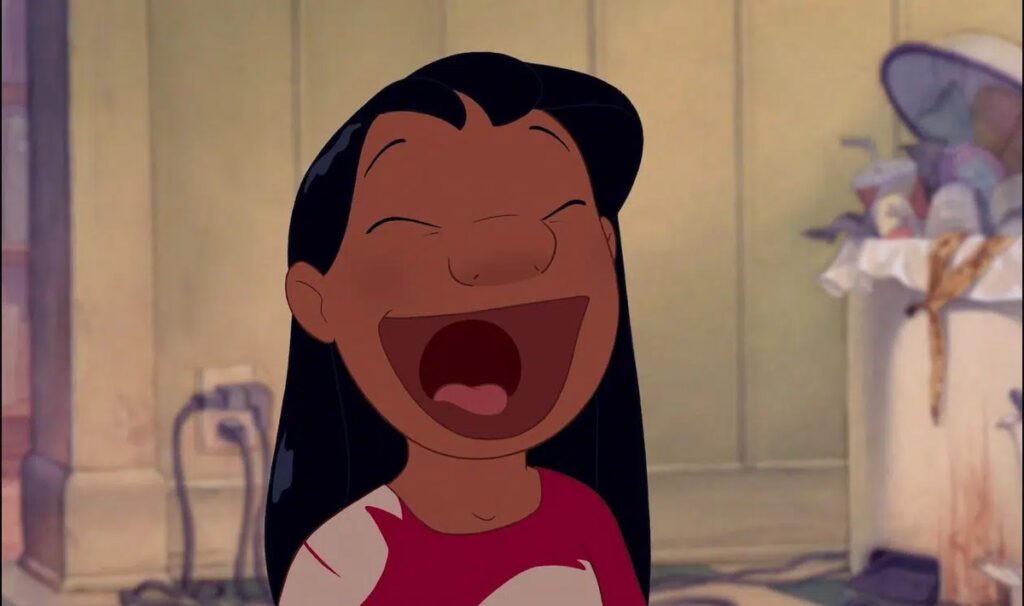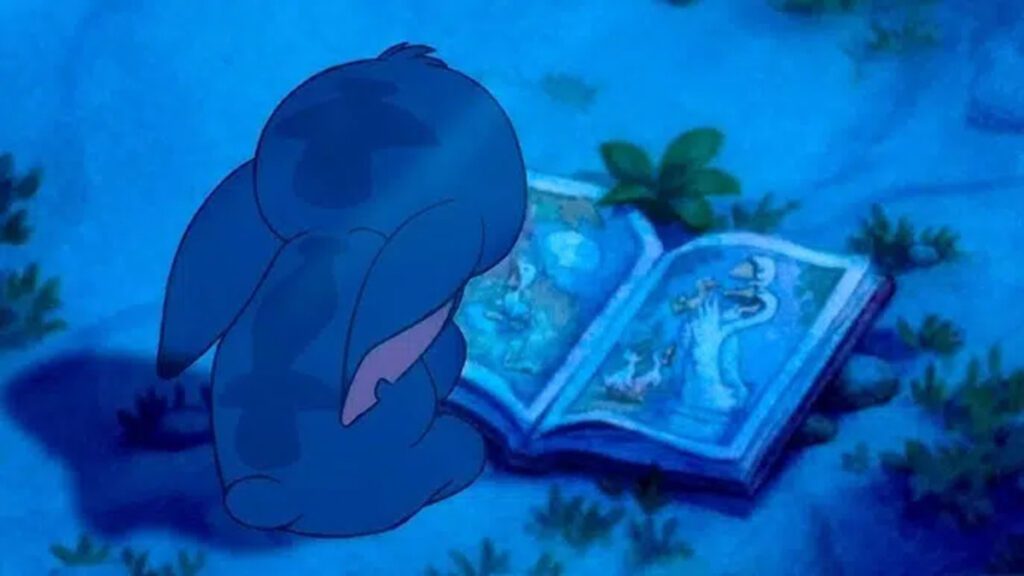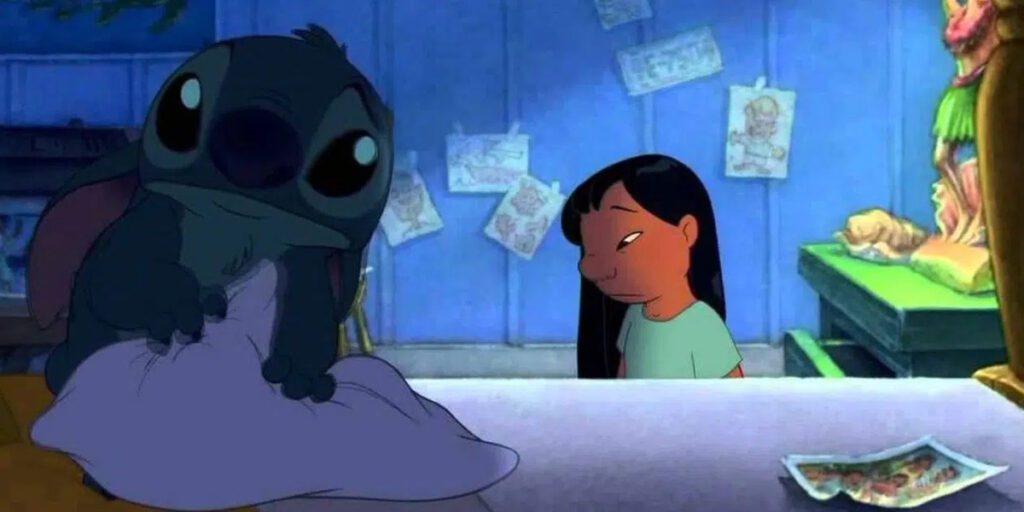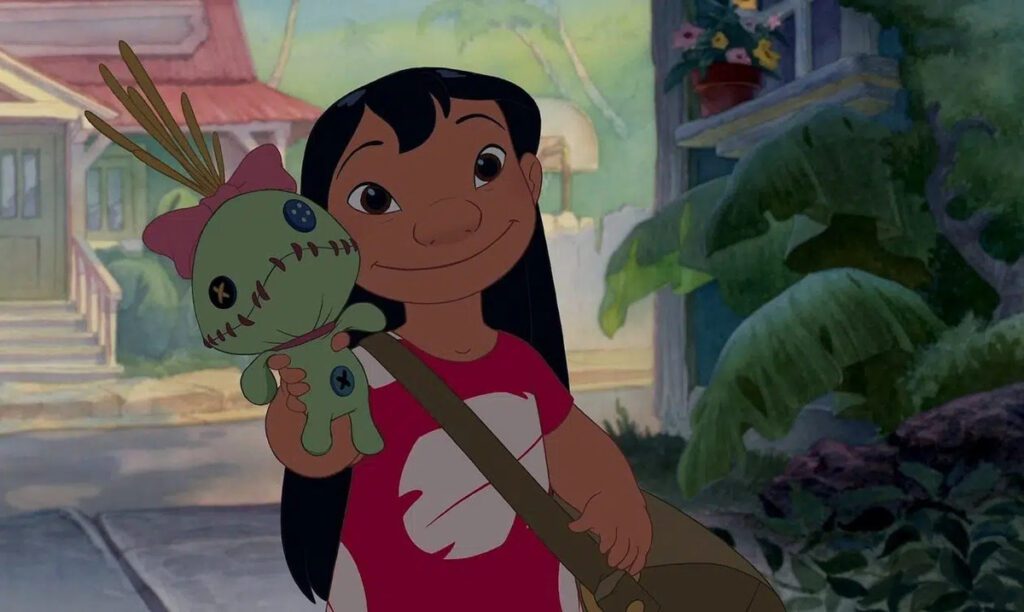Disney’s 2002 classic, Lilo & Stitch, continues to stand out as one of the most emotionally resonant films in the studio’s history. Even after the release of its live-action remake, the original still carries a unique emotional depth that makes it unforgettable.
When Lilo & Stitch first hit theaters in 2002, it quickly became a fan favorite, earning its place as one of Disney’s most beloved films. With its mix of quirky humor, unique animation style, and heartfelt moments, it set itself apart from other Disney classics. But what truly made this film resonate wasn’t just its lovable alien protagonist, Stitch, but its story about family, loss, and finding belonging. While the 2023 live-action remake of the film may have captured the visual appeal, it hasn’t quite captured the same emotional core.

Lilo: The Other Adorable Little Monster
Unlike many Disney movies that feature sweet, innocent child characters, Lilo is a breath of fresh air. She’s not the typical “perfect” Disney child. At six years old, she’s hyperactive, often misunderstood, and brimming with contradictions—traits that make her both hilarious and deeply relatable. She’s a girl who embraces her quirks, from her love for Elvis Presley to her “naturalist” photos, and even her wild ideas like giving her pet fish a sandwich every Thursday to bring the sun. Her character feels remarkably real, filled with imperfections, which makes her stand out from the typical Disney heroines of the time.

Lilo’s character is not just about her eccentricities, though—there’s depth. She carries the weight of her family’s struggles, feeling the sting of being different, as well as the pain of loss. Her interactions with Stitch—the adorable yet destructive alien—are filled with humor, but they also showcase her vulnerabilities. Lilo’s line, “We’re a broken family, aren’t we?” might sound simple, but it’s a perfect example of the emotional maturity woven throughout the film.
Ohana Means Family
While Lilo & Stitch has its fair share of fun, especially with the antics of Stitch, at its heart, it’s a story about family—particularly a broken family trying to stay together. The movie explores themes of loss, grief, and the struggle to belong. Lilo and her older sister Nani are orphans, struggling to keep their family intact despite the looming threat of being separated by child protective services.

What makes the film stand out among other Disney classics is its portrayal of real-world issues. The death of their parents isn’t some grand tragedy; it’s a mundane, heartbreaking accident—a detail that makes the story all the more relatable. The film doesn’t shy away from showing the difficulties of single-parent families, especially Nani’s role as the overwhelmed sister who must balance raising Lilo with managing her own life. The everyday struggle for stability and love is far more prominent than any fairytale or mythical elements.

Lilo & Stitch might have a backdrop of aliens and outer space, but the emotional weight of the film is grounded in the real challenges people face every day. It’s a refreshing departure from Disney’s usual fantasy-based stories, offering a rare glimpse into the true struggles of a small family trying to survive and thrive.
A Film That Speaks to Imperfection
Lilo & Stitch is often remembered for its humor, but it also offers some of the most touching and sincere moments in any animated film. The movie doesn’t sugarcoat the difficulties Lilo and Nani face, whether it’s dealing with their tragic loss, the stress of their daily lives, or Lilo’s struggle to fit in. Lilo isn’t portrayed as a perfect child; she’s messy, sometimes emotional, and often in trouble, but that makes her all the more lovable and relatable.
Perhaps one of the film’s most notable moments comes when Lilo says, “I need a friend who will never leave me.” It’s a simple line, yet it cuts to the core of what makes Lilo & Stitch so timeless. The film’s emotional resonance isn’t just about its themes of love and family—it’s about the way these themes are expressed through imperfect, flawed characters who are just trying to find their way.

Even though Lilo & Stitch has a unique and colorful art style and plenty of slapstick humor, the film’s emotional depth, especially in its portrayal of family relationships, is what really makes it stand the test of time. Lilo’s heart-wrenching moment of despair when she’s separated from Nani, or when she grapples with the idea of never seeing Stitch again, highlight the film’s maturity in dealing with real, difficult emotions that many kids and adults alike can relate to.
Why Lilo & Stitch Still Resonates Today
Even as Disney releases newer content and explores remakes of their classics, Lilo & Stitch remains a film that has yet to be surpassed in terms of emotional depth. The remake, while visually appealing, lacks the same kind of emotional maturity and character-driven storytelling that made the original so special. Disney has struggled in recent years to replicate the same emotional resonance, particularly with characters that feel as real and multi-dimensional as Lilo.
One element that the remake failed to capture is the significance of Lilo’s doll, “Souillon”, a monstrous-looking doll that becomes an important symbol of Lilo’s own sense of difference. In the original, Lilo’s attachment to Souillon mirrors her own struggle to accept herself, while her act of throwing the doll away in favor of Stitch symbolizes her willingness to open her heart. This small yet powerful detail is lost in the remake, highlighting just how much the original film was able to convey through subtle, nuanced storytelling.
As we revisit Lilo & Stitch today, we’re reminded of the emotional maturity it offered, especially when it comes to tackling themes of grief, loss, and the complexities of human relationships. The original is a film that doesn’t just entertain; it makes you think, reflect, and feel deeply. Its message about the importance of family—no matter how unconventional—is as relevant today as it was in 2002.

Meet Bill, a curious mind with a rebellious streak and a shared enthusiasm for lifestyle and culture. Like his longtime collaborator William, he’s captivated by the pulse of current events. But Bill brings a twist, he thrives on spontaneity, often following instinct over convention. His unconventional flair adds a dynamic edge to the team, making every project a little less predictable and a lot more exciting.












